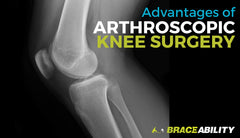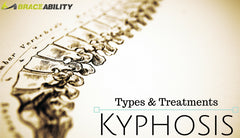Anterior Cruciate Ligament (ACL) Injury
What Is an ACL injury?
An anterior cruciate ligament (ACL) injury typically refers to an ACL tear (complete or partial) of this connective tissue within the knee that links the shin bone to the thigh bone. The ACL is very instrumental in preventing the shin from extending too far relative to the thigh and for stabilizing the knee. As you can likely imagine, the ACL is important to being able to engage in the cutting, pivoting, jumping and sudden stopping necessary for a number of sports activities.
Mechanism of ACL Injury
These very activities are frequently the ACL mechanism of injury. An ACL injury often occurs due to the following:
- Hyperextension
- Sudden deceleration
- Too much rotation of the shin bone relative to the thigh bone
These are typically non-contact injuries, with knee ACL injury being most common during basketball and football in younger patients and during skiing in older patients, according to Wheeless’ Textbook of Orthopaedics. More specifically, the text indicates the most common ACL injury mechanism is “in a noncontact deceleration situation that produces a valgus twisting injury … when the athlete lands on the leg and quickly pivots in the opposite direction.”

ACL injury statistics show that injury to this ligament is becoming more common, especially among women. Young people are increasingly involved with sports on a year-round basis, so that is one reason for the statistic. For more on this, see this ABC News ACL injury video (NF) about the Tom Brady ACL injury and his support of children with the injury. Women are also much more prone to an ACL injury (two to eight times more vulnerable than men) due to their physical structure as well as because of certain hormones that are found in female bodies related to childbearing and menstruation.
ACL Injury Symptoms
What are signs of ACL injury? When the injury occurs, many hear or feel a “pop” followed by pain and swelling. Sometimes the onset of pain and swelling is immediate. For others, it comes after some time has passed. Other symptoms of an ACL injury include swelling and instability of the knee
ACL Diagnosis
A doctor will check the knee for swelling and tenderness and will likely run a variety of ACL tear tests to determine if the ligament is indeed torn. Even if this is enough to diagnose an ACL tear, the professional will likely recommend one of the following scans to check for additional damage (e.g., an ACL/MCL injury, bone fracture, cartilage damage, etc.) and to evaluate how bad the torn ACL injury is:
- X-ray
- MRI (magnetic resonance imaging)
- Ultrasound
Once the damage is assessed, one can decide on a course of treatment. Many with an ACL tear injury opt to repair it with reconstructive surgery. Indeed, that is the only way to “repair” this ligament; there is little blood flow to this region, rendering the body unable to repair the tendon itself. One can function without an ACL tendon. The tradeoff, however, is that not reconstructing it leaves the knee unable to handle sudden cuts, pivots, etc., meaning an athlete will not be able to return to his or her pre-injury level of sports activity. Further, the knee will be more vulnerable to another knee injury, ACL or otherwise, going forward.
Physical Therapy for ACL Injury
Whether or not one undergoes surgery, physical therapy for ACL injury will be needed. Without surgery, this process of strengthening the muscles to compensate for the absent or partially torn ACL typically spans three months. Undergoing ACL injury surgery stretches this recovery period to six to 12 months, on average. ACL injury surgery typically involves grafting tissue from one’s own patella tendon or hamstring to reconstruct the ACL, or it can involve using cadaverous tissue to reconstruct the ACL. The resting period required for ACL injury—including time using a brace for ACL injury and crutches, not to mention the inability be physically active due to the healing ACL and pain after ACL surgery—means atrophy of the leg muscles will occur. Physical therapy is therefore crucial to returning one’s range of motion, strength, and endurance to the level seen prior to the ACL knee injury. After and during this rehab, one may have to wear an ACL injury brace. A number of high-profile professional athletes have suffered ACL injuries in recent years. Read about the Tiger Woods ACL injury in the article “Tiger Woods’ ACL Surgery: FAQ.”
ACL Injury Prevention
Considering the prevalence of ACL injuries today, it is not surprising that many professional and non-professional athletes alike follow an ACL injury prevention program. Such stretches and strengthening exercises will be customized to the individual and his or her sport, but generally speaking, these emphasize using proper form, building strength and flexibility, and promoting stability and agility.




